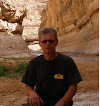Day 440
Katutura – in the local Otjiherero language it means - "The place where we do not want to live".
Some lines about the history of the city: Windhoek is situated at an altitude of 1650 meters and according to one legend has got its name due to hot-water springs, Nama people called this place Ai-Gams (fire-water) and Hereod named the place - Otjomuise (meaning "place of steam").
The Germans arrived here in 1890 and built a fortress by the name of Alta Feste, which became the headquarters of the German colonial troops or Schutztruppe. Currently there is a museum at the castle. The German colonial era came to an end during World War I when South African troops occupied Windhoek in May 1915. In 1950s the town Government together with the SA apharteid regime wanted to build separate areas for locals (such as Soweto near Johannesburg). The local residents did not want to move to Katutura and the encounter on December 10, 1959 ended with bloodshed and with the death of 13 people.
The resettlement then continued without any incidents and was over in 1968, when almost all of the black population was living in the new area. In 1968 in Katura the number of the houses was about 4,000, they were all rental houses - could not be bought or sold, there was neither water and nor electricity. Each house had to have the tribal identification number (H = Herero, D=Damara, etc.). After Namibia's independence in 1990 the restrictions of the residence were abolished, long-term residents were given the right to buy their own housing forever. In 2006 there were more than 150,000 inhabitants in Katutura and the population continues to grow as people are arriving from rural areas in search of work and better life.



The local market square in the afternoon. TV repair business is in full swing.

I asked the master whether I could take some pictures and he had nothing against it.

The next row – sewing workshops





The soles of the shoes are made of old tires, and there seems to be enough pattern yet. Should last out quite a long time.




People come from the countryside to town to look for work.




The main building material of the temporary constructions is corrugated sheet metal. And with warm weather it is really hot inside.

This road in construction is the perfect place to play football.

More and more roads are being built to improve the living conditions of the area






December 10 is "The Human Rights Day".

About everyday life.
Cardboard Box Backpackers is the current overnight place in Windhoek. As always - in this kind of places – there is a kitchen and a small refrigerator in the kitchen, electric stove, one can wash the laundry and breakfast and coffee are included in the price (the price is $ 70N $ or 7euros a day), and above all, here is free wifi. And of course, at the backpackers place like that, one can meet many people and have a nice opportunity to exchange impressions of the trip and find new information.




No comments:
Post a Comment